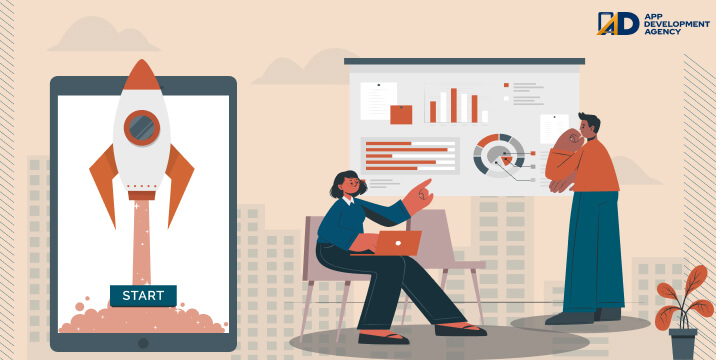Construction management software plans, schedules, creates budget, and monitor (1) Residential buildings, (2) Commercial structures, (3) Public buildings: (hospitals, schools), (4) Infrastructure projects: (bridges, airports), (5) Large-scale industrial facilities by centralizing data, streamlining workflows, and improving communication among stakeholders, ultimately leading to increased efficiency, better cost control, reduced errors, and more informed decision-making throughout a project’s lifecycle. It also takes care of creating (1) project timelines, (2) managing expenses, (3) storing documents, (4) facilitating team collaboration, and (5) providing real-time data for improved oversight and risk mitigation.
It stores all project information, from budgets and schedules to documents and communications to ensure that everyone has access to the most up-to-date data.
A construction management system is being used by many projects and companies of varying sizes. Residential contractors to large-scale civil and commercial projects use it. They follow a stepwise process that goes from pre-construction, project execution, financial management, quality and safety to maintenance post-construction. Firms use software for automated estimating, bid management, and feasibility studies. On-site teams use mobile platforms for (1) real-time communication, (2) task management, (3) scheduling, and (4) document sharing.
These tools are used to:
What happens when field and office teams can access project data from anywhere, in real time? Is this shift from on-premise to cloud and mobile-first platforms changing how teams work?
How does combining Building Information Modeling with construction management systems affect planning? Can 3D visualizations and clash detection improve accuracy across the project lifecycle?
What can teams learn by analyzing project data? Could insights from data analytics improve how resources are used or how risks are managed?
How is AI changing how construction projects are managed? Is it possible to shift from reacting to problems to predicting them?
Can design decisions be made faster if AI tools generate layout options based on set rules? Does this help with long-term goals like sustainability?
AI studies past data and real-time inputs to spot risks early. This cuts down on delays, cost issues, or safety problems.
If cameras and drones can see what’s happening on site, can they catch safety violations or spot quality issues before they get worse?
This whole process automates routine tasks and leaves the admin to focus on the functionality. CMA keeps data accurate, lowers risk, and is budget-friendly. Better visibility into timelines supports tighter control, which keeps projects on schedule, within budget, and built to the right standards. With tools now handling these tasks faster and more reliably, older manual processes start to seem inefficient by comparison.
A mid-sized contractor once used a Construction Management App. He was using a mess of Excel files and Slack messages which were not in sync. He used to miss deadlines and project became very expensive.
So he asked, “How much would it cost to just build an app that does what we need?” It would depend on the demand in market and the skills of developers in mobile app development agencies – freelancers, in house or outsourced.
In this context, if you’re building a basic Construction App, with features like daily logs, task assignments, and document uploads, you’re probably looking at $60K to $90K. That’s for iOS and Android, plus a simple web dashboard for making a software with straightforward interface and limited integrations.
Once you start adding real-time updates, scheduling, GPS tracking, offline access, or integration with tools like Procore or Autodesk? A mid-tier construction management app runs about $120K to $180K. Plus it takes 4 to 6 months to build. The development time could be less if your app development agency already knows the space.
Now, if you’re going all in—custom workflows, user roles, analytics, BIM syncing, third-party integrations, even AI-powered forecasting—expect $200K to $350K+. The return is worth it when it cuts delays and waste by even 10%.
Hiring the wrong dev team could cost you more. They might underquote and overpromise, leaving you empty handed with nothing substantial to offer to your clients.
If you’re serious about construction app development, pick a team that’s built something similar. Ask to see the source code. Not just the UI. Get clarity on backend costs too. Firebase? AWS? That adds up.
Budget also needs to include ongoing updates, hosting, QA, and bug fixes. Plan for $2K to $5K per month post-launch. More if you have scale.
To be blunt, custom app development isn’t cheap. But running your jobs off patchy spreadsheets and group chats will cost you more in the long run.
How does an app development agency integrate AI and change the management of construction projects? Is it possible to shift from reacting to problems to predicting them?
Can design decisions be made faster if AI tools generate layout options based on set rules? Does this help with long-term goals like sustainability?
What happens when AI studies past data and real-time inputs to spot risks early? Can this cut down on delays, cost issues, or safety problems?
If cameras and drones can see what’s happening on site, can they catch safety violations or spot quality issues before they get worse?
Can AI update schedules on its own and decide how to use crews or equipment based on real project data?
What if software handled tasks like logging hours, filling reports, or processing invoices? Would that free up time for managers to focus on the bigger picture?
Mobile app development agencies will embed AI to handle risk, budget, and schedule management better. CMA integrates real-time data from sensors to monitor equipment health, worker safety, and environmental conditions. Larger technology companies are expected to acquire smaller, niche software providers to build comprehensive, integrated platforms.

Are you one of those who use ten tools to complete one task – switching from email to CRM to Project Management to Google Worksheet? You might simply require one enterprise solution! Back in 2019, in a mid-sized logistics firm, everything ran on spreadsheets and emails. It was fine until there were missed updates, clashing …
Continue reading “Why Are Enterprise App Development Companies Working So Hard?”
Read More
Is the ridesharing industry saturated now? No doubt there are already a lot of best ridesharing apps globally. However, as per Statista, the leading research site, the ridesharing market is expected to grow at 22.13% annually and reach $226 billion dollars by 2028. The numbers are crazy, and to further prove our point – Arro, …
Continue reading “14 Best RideShare Apps in 2025”
Read More
Imagine… you and your beloved partner are out for a lovely dinner and suddenly realize that you slipped bringing food to your dog who is currently starving at home. You do not want to ruin the dinner date and hope that someone could go to the market for you, bring some dog food, and then …
Continue reading “14 Apps Like TaskRabbit to Make Money in 2025”
Read More